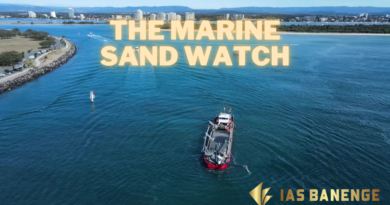Coastal Aquaculture Authority (Amendment) Bill 2023| Ias Banenge
Context:
The Coastal Aquaculture Authority (Amendment) Bill, 2023, recently passed by Parliament. These amendments seek to address ambiguities, streamline administrative processes, and integrate emerging aquaculture practices.
Relevance:
GS II: Polity and Governance
READ MORE – About The In Vitro Fertilization (IVF) |Ias Banenge
Dimensions of the Article:
- Coastal Aquaculture Authority Act, 2005
- Major Provisions of Coastal Aquaculture Authority (Amendment) Bill, 2023
- Status of Coastal Aquaculture in India
Coastal Aquaculture Authority Act, 2005
Coastal Aquaculture Authority Act, 2005: The Coastal Aquaculture Authority Act, 2005 is legislation aimed at regulating coastal aquaculture activities along coastlines and estuaries. Its key provisions include:
- Special Organization: Creation of the Coastal Aquaculture Authority to manage and control seafood cultivation activities near the coast.
- Environmental Protection: Ensuring that coastal aquaculture practices do not harm the environment.
- Scope: Regulating the cultivation and rearing of aquatic organisms such as fish, shellfish, and aquatic plants in marine or brackish water environments.
Major Provisions of Coastal Aquaculture Authority (Amendment) Bill, 2023:
The Coastal Aquaculture Authority (Amendment) Bill, 2023 introduces significant changes to the existing Act. Key provisions include:
Expanding Scope:
- Definition Broadening: Bringing all coastal aquaculture activities under the Act, including methods beyond shrimp farming like cage culture, seaweed culture, and ornamental fish culture.
- Emerging Practices: Recognition of environmentally friendly aquaculture practices to boost revenue and employment opportunities for coastal communities.
Facilitating Aquaculture Units:
- Within No Development Zone (NDZ): Allowing hatcheries, Broodstock multiplication centers, and Nucleus Breeding Centres to operate within 200 meters from the High Tide Line (HTL).
Simplifying Regulatory Processes:
- Registration Modification: Replacing imprisonment with civil penalties for unregistered coastal aquaculture activities.
- Operational Flexibility: Allowing modifications of certificates of registration for changes in ownership or activity size.
- Delay Condoning: Empowering the Coastal Aquaculture Authority to condone renewal application delays with a compounded fee.
Environmental Protection and Compliance:
- Emission and Effluents Standards: Authority empowered to establish emission or effluent discharge standards for aquaculture units.
- Polluter Pays Principle: Holding aquaculture unit owners responsible for environment-related damage costs.
- Ecologically Sensitive Areas: Prohibiting aquaculture activities in vulnerable ecosystems.
Advancing Disease Prevention and Sustainability:
- Antibiotic-Free Aquaculture: Prohibiting the use of antibiotics and pharmacologically active substances to prioritize aquatic ecosystem health.
Status of Coastal Aquaculture in India
India boasts a vast coastline of approximately 7,517 km, providing a promising platform for the development of coastal aquaculture. Here’s an overview of the current status of coastal aquaculture in the country:
- Diverse Species Cultivation: Coastal aquaculture in India encompasses a range of aquatic organisms, including shrimp, fish, crab, oyster, mussel, seaweed, and pearl.
- Shrimp Dominance: Shrimp production has been a dominant force in Indian coastal aquaculture. Over the past nine years, shrimp production has witnessed an astounding surge of 267%.
- Seafood Exports Soar: The growth in shrimp production has had a significant impact on seafood exports from India. The country’s seafood exports have experienced a remarkable doubling effect, skyrocketing from Rs 30,213 crore in 2013-14 to Rs 63,969 crore in 2022-23.
- Shrimp’s Contribution: It’s important to note that a substantial portion of the increased seafood exports can be attributed to shrimp cultivation.
- Key States Driving Growth: Several coastal states have played pivotal roles in driving the expansion of coastal aquaculture, particularly shrimp production and subsequent exports:
- Andhra Pradesh
- Gujarat
- Odisha
- Tamil Nadu
- Export Contribution: These states have contributed significantly to the surge in shrimp production and exports, bolstering India’s position in the global seafood market.
-Source: Indian Express





Pingback: Landing Chandrayaan-3 Near the Moon's South Pole